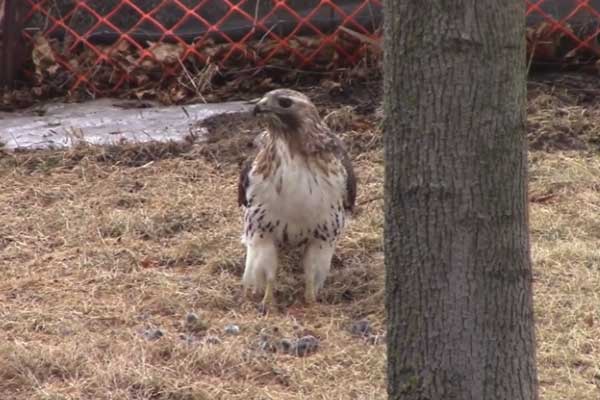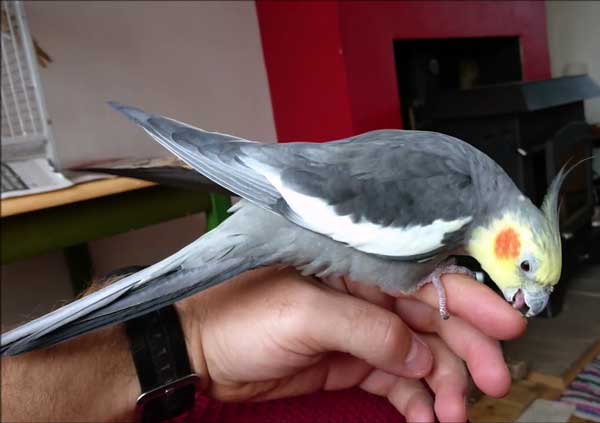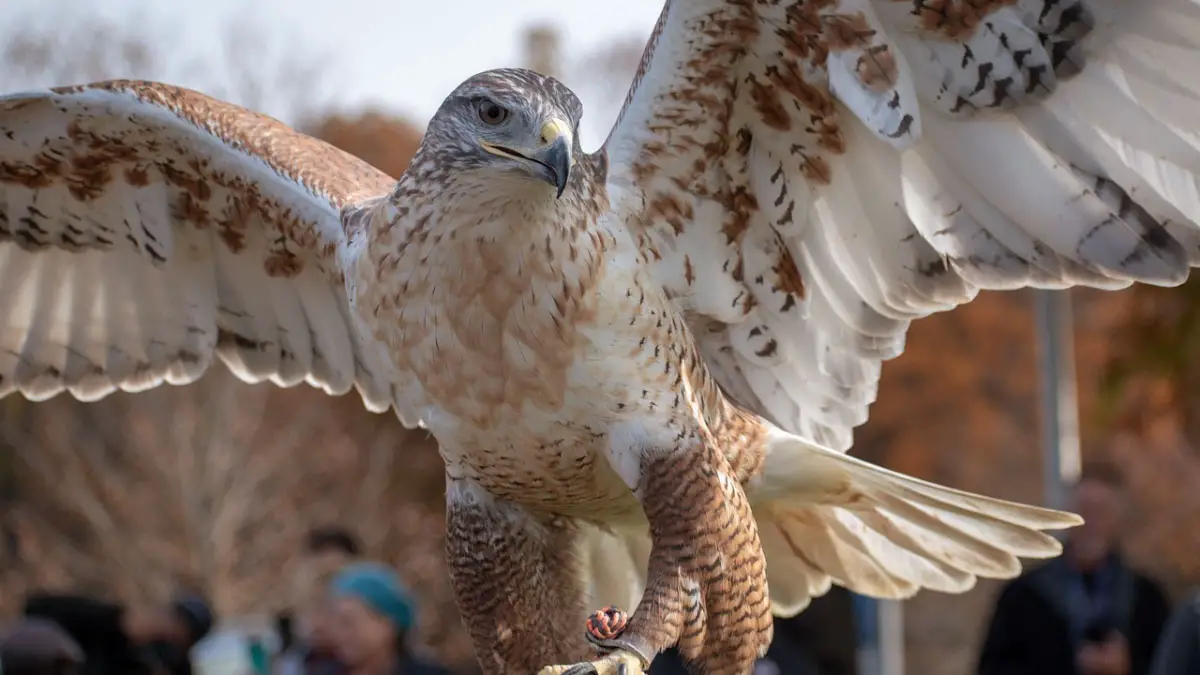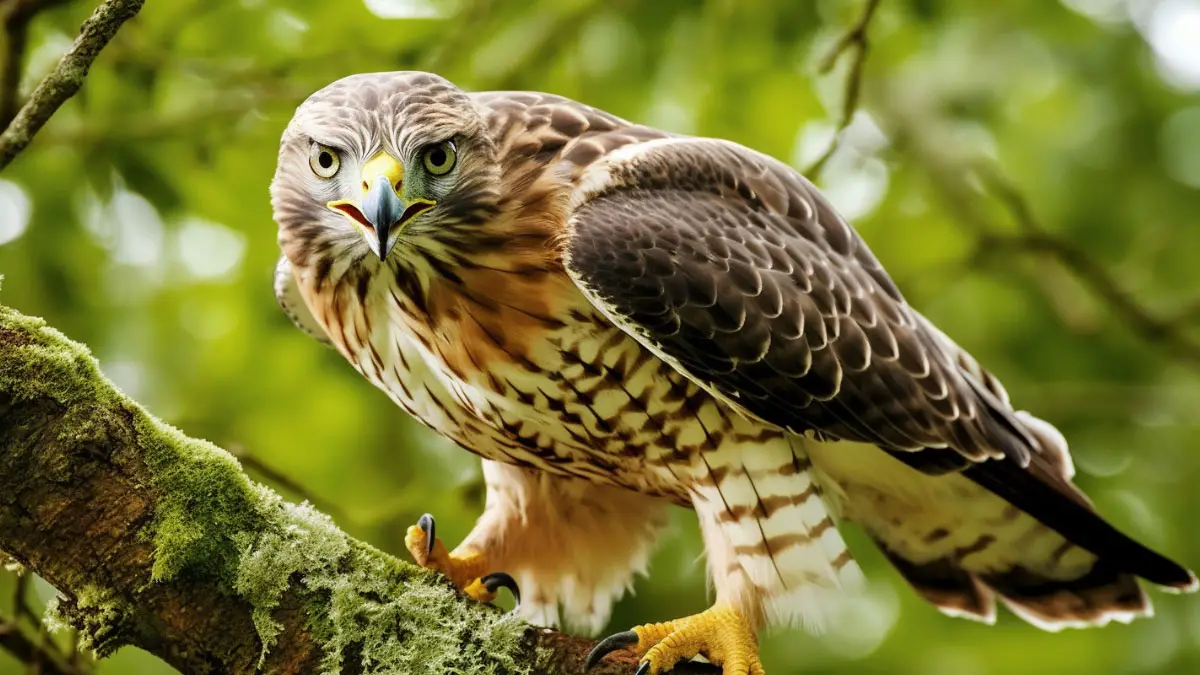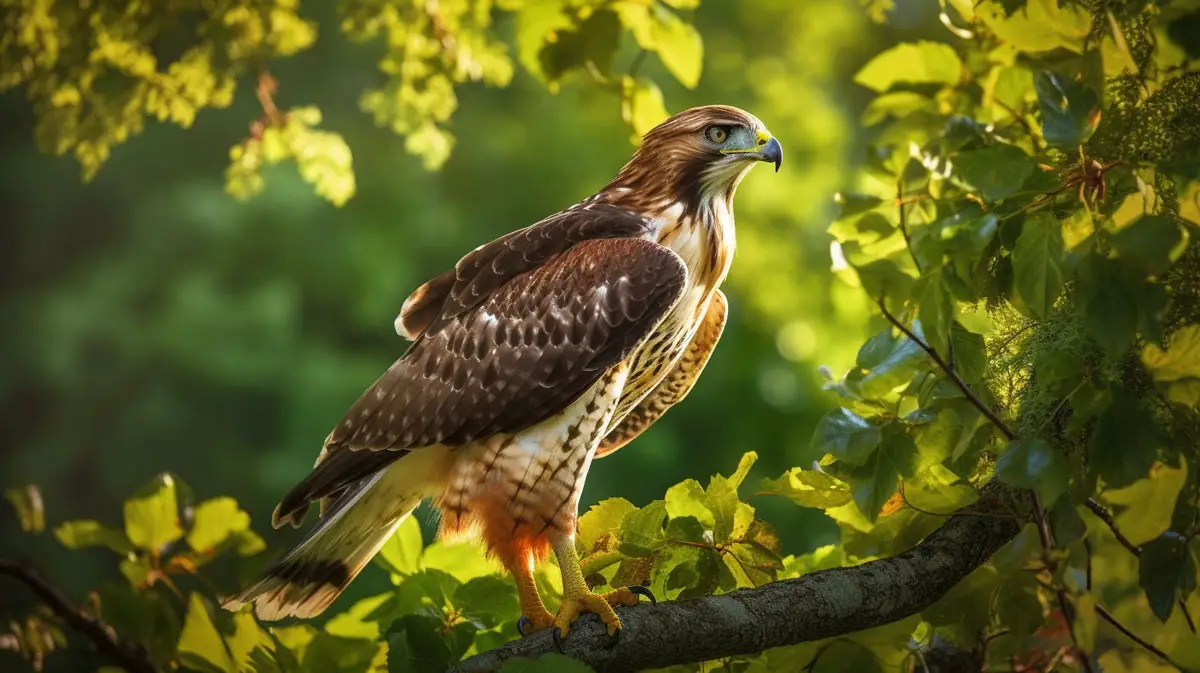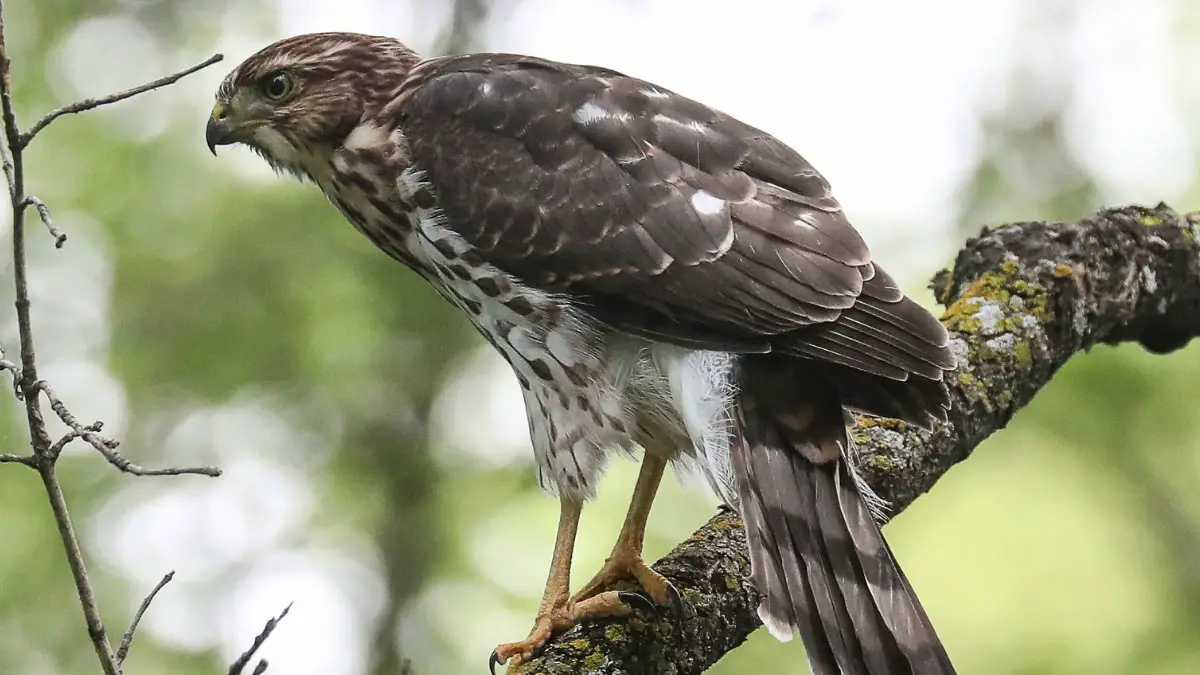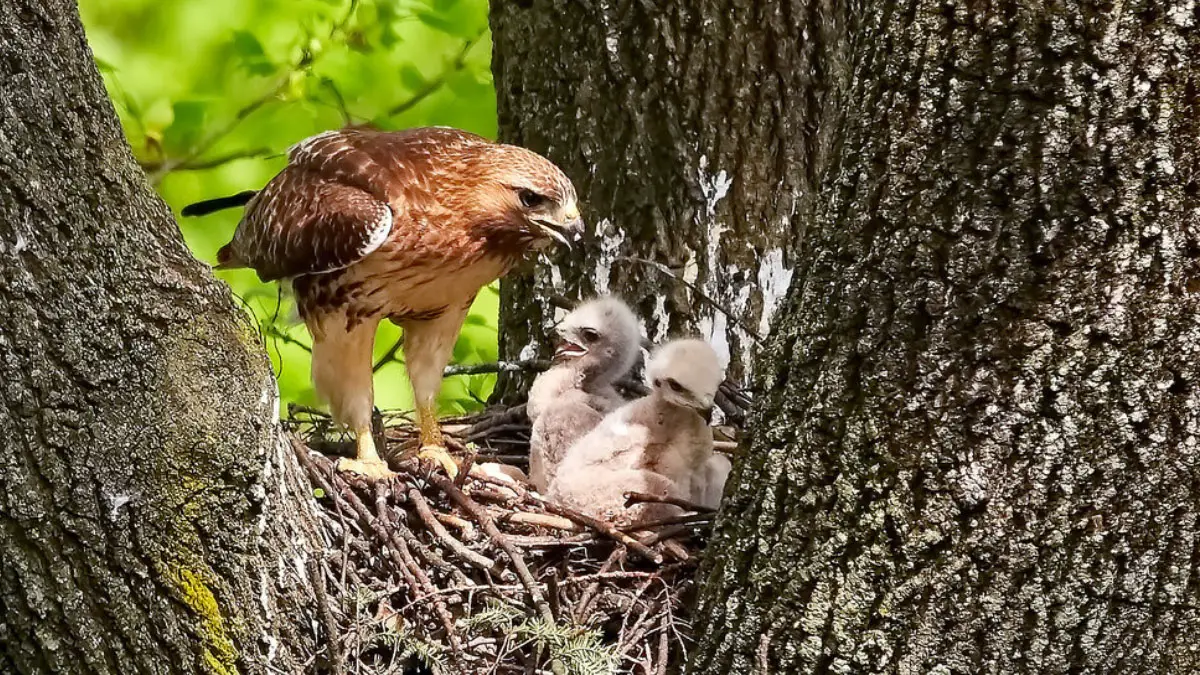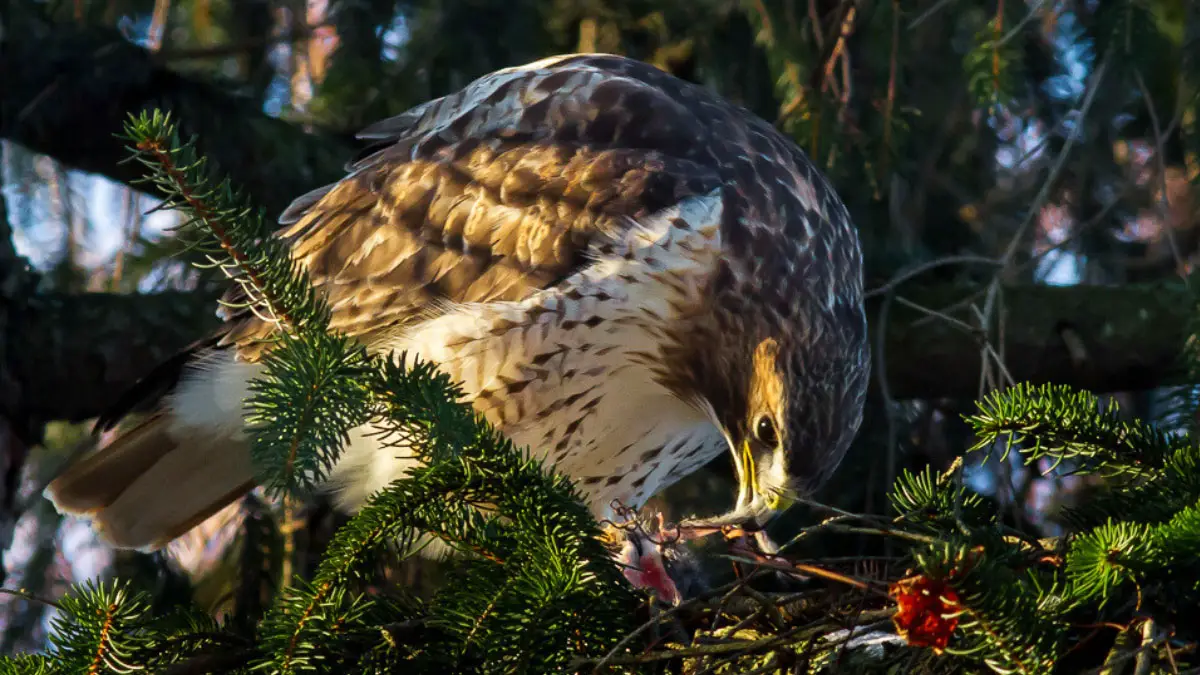Interested in knowing whether or not hawks eat mice? However, you can’t find as much information about this topic on the internet as you would want. Well, you have come to the right place.
So, do hawks eat mice? Yes, they do. In fact, for most hawk species like the red-tailed hawk, mice are their primary staple food. This is because mice are very nutritious and easier to catch than other prey. Therefore, on average, most types of hawks can eat between 6 and 8 mice per day.
But how do hawks hunt and kill mice? And do all hawk species eat mice? In this article, you will find out everything there is to know about hawks eating mice. So, read on.
Do Hawks Eat Mice
Yes, they do. These birds of prey can feed on anything including dead animals. However, mice are one of their most common foods. In fact, baby hawks can eat 2-3 mice in a day or more depending on the availability of prey. On the other hand, large-sized hawks are likely to consume between 6 and 8 mice per day.
But how do these birds of prey eat mice? Well, some hawks prefer eating small-sized mice whole. But if the mouse is too big, you will find the hawk shredding it into pieces first. This makes it easier for them to digest the meat.
Also worth mentioning is that you rarely find these American birds of prey eating dead mice. They prefer killing the mice and eating the meat when it’s fresh. And like with other prey, they may choose to feed on the mice at the spot where they catch them. Or carry the game and eat it near their nesting sites.
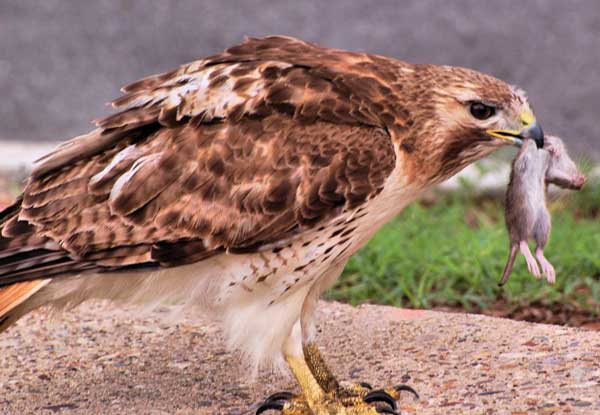
So then, when do these bird-eating birds hunt for mice? Most species prefer eating adult and baby mice in the winter. This is because, during this time, a wide array of animals that hawks prey on are usually in hibernation. However, mice don’t hibernate in the winter.
What Method Do Hawks Use to Hunt For Mice?
These natural mouse predators use a wide range of tactics to catch mice before killing and eating them. These methods include:
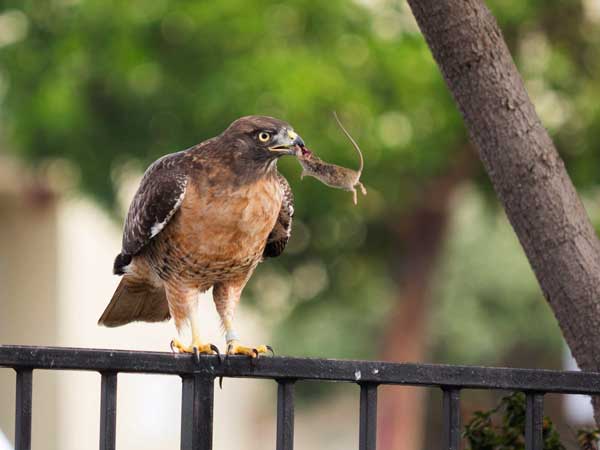
Soaring in the sky
Most hawks, such as the red-tailed species, usually soar in the sky in circles until they can spot mice. Because of their good eyesight, these amazing hunters can spot mice from as high as 100 feet up in the sky.
Perch and swoop method
This method involves the hawk sitting or perching on a tall tree branch and waiting for the mice. Once it spots its prey, the hawk swoops to the ground to catch it.
Hovering in the air
Some hawk species prefer flying low over an open landscape and staying in a stationary position while flapping their wings. And once it sees its prey, you will see it dive down to pounce on the mice.
Low soaring
Smaller hawks than the red-tailed species use this tactic when hunting in the open fields. The tactic involves the hawk flying lower or closer to the ground and in a straight line waiting for mice.
How Do Hawks Kill Mice
It’s simple! Using their razor-sharp talons and honed beaks. A baby or adult hawk will use its sharp claws to grab the mice and pin them to the ground while still alive. This may kill the mice due to suffocation caused by the weight of the bird of prey.
But on most occasions, the hawk uses its powerful curved beak to kill the mice by tearing their skin. It starts by removing the fur before digging into the flesh. Eventually, this causes the baby mice to die because of losing too much blood.
Which Hawks Eat Mice
While hawks do eat mice, some species like the ferruginous hawks and red-shouldered hawks rarely hunt them. However, there is a wide variety of hawk species that take mice as their primary food source. These include:
Red-tailed hawks
These are one of the largest hawks that primarily feed on mice and rats. As a matter of fact, an average red-tailed hawk can consume up to 28 large mice every week. And unlike other species of hawks, this predatory bird can locate a mouse from as high as 100 feet up in the air.
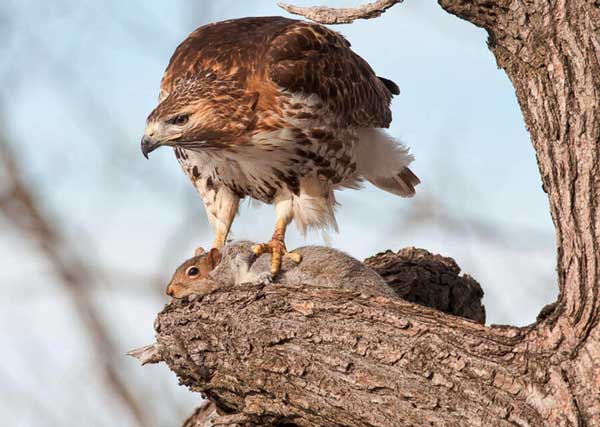
Sharp-shinned hawks
Because of their small size, sharp-shinned hawks prefer eating small animals like rodents and small birds. Typically, larger birds carry the mice to a spot near their nest to pluck their fur before feeding on them.

Rough-legged hawks
These species of hawks feed on small rodents during the breeding season. And in winter, you often find them feeding primarily on mice and other small types of mammals. This is because mice are very active during the winter season since they don’t hibernate.

Cooper’s hawks
Because of their medium size, Cooper’s hawks are another highly skilled and agile predator of mice. You can spot them on open woodlands and wood edges, hunting for small-sized mice.
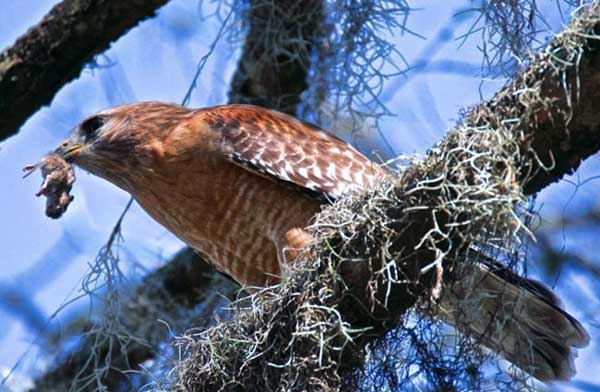
Broad-winged hawks
The diet of broad-winged hawks usually changes based on the time of the year. When it comes to eating mice, they do it mainly in the winter when the prey is in abundance.

What Other Animals Prey on Mice
The main predators of mice include large and medium-sized birds, like hawks, owls, falcons, the blue jay, crows, and eagles. But besides the birds, there are a variety of animals that prey on these creatures, including:

Reptiles and amphibians
Reptiles such as the black rat snake, bearded dragons, tuatara, lizards, and leopard geckos are also natural mouse predators. As for amphibians, they comprise a variety of large frog species.
Felines
Other natural mouse predators include both domesticated and wild cats. In fact, feline species like the bobcats, mice are their basic food.
Small mammals
The most common types of mammals that hunt and eat mice include skunks, ferrets, weasels, and minks. For weasels and skunks, it’s actually their primary staple food.
Frequently Asked Questions
Now, let’s quickly look at some common questions people ask about hawks and this common prey called mice.
It depends on the size of the mouse. If the mouse is too big, the bird of prey will tear it apart and feed on it. But if the mice are small, even a medium-sized hawk can swallow them whole.
The red-tailed hawk is reported to consume up to 28 mice a week. But on average, most hawks eat between 6 and 8 mice per day.
Yes. This is because mice are scavengers and will consume any type of protein. However, this is most common when the food supply is low, like during the winter season.
Final Words
Hawks prefer eating mice not just because of their small size but also because of how nutritious they are. And to catch mice, they may use different hunting tactics like soaring high in the sky. Additionally, some hawk species use the perch and swoop hunting method or hovering in the air.
Also worth mentioning is that these fascinating birds only use their sharp talons and curved beaks to kill mice. However, not all hawks love preying on mice. Some common hawks that eat mice include the red-tailed, sharp-shinned, broad-winged, and rough-legged species.
Do you want to know if hawks eat grasshoppers or squirrels? Read our articles about it to learn more.
